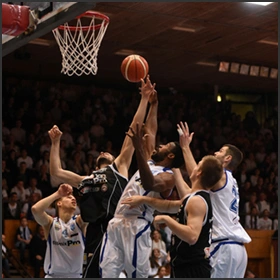Sports-Related Dental Injuries and Sports Dentistry
COURSE NUMBER: 127
Credit Hours:
2 Hour(s)
SHARE
Whether for exercise, competition or the simple enjoyment of recreational activity, increasing numbers of health conscious Americans are involved in sporting activities. Over the past decade, 46 million U.S. children were involved in sports...
(Use this feature to create assignments for your students and staff.)
Overview
Whether for exercise, competition or the simple enjoyment of recreational activity, increasing numbers of health conscious Americans are involved in sporting activities. Over the past decade, 46 million U.S. children were involved in sports. It’s estimated that 30 million of these children are participating in organized sports. Sports injury accounts for 10-39% of all dental injuries. Children most prone to sports-related oral injury are between 7-11 years old.
Whether for exercise, competition or the simple enjoyment of recreational activity, increasing numbers of health conscious Americans are involved in sporting activities. Over the past decade, 46 million U.S. children were involved in sports. It’s estimated that 30 million of these children are participating in organized sports. Sports injury accounts for 10-39% of all dental injuries. Children most prone to sports-related oral injury are between 7-11 years old.29,43,45-47
Approximately 15 million Americans suffer dental injuries and 5 million teeth are lost annually in sports-related injuries. During a single athletic season, athletes have a 1 in 10 chance of suffering a facial or dental injury. In fact, the lifetime risk of such an injury is estimated to be about 45% according to the National Youth Sports Foundation. The NYSSF estimates more than 3 million teeth will be avulsed in youth sporting events. They also report that athletes who don’t wear mouthguards are 60 times more likely to experience trauma to the oral cavity.41 In a recent survey commissioned by the American Association of Orthodontists (AAO), 84% of children do not wear a mouthguard during organized sports because they are not required to wear them, even if they’re required to wear helmets and other safety gear.44 In a recent review of data that was collected by the National High School Sports-related Injury Surveillance Study, 72.5% of dental injuries occurred when athletes were not wearing a mouthguard. Although the data indicated that dental injuries were not as common as other injuries, the majority of dental trauma occurred when the athlete was not wearing a mouthguard.53 Dentistry plays a large role in treating oral and craniofacial injuries resulting from sporting activities.
Prior to the 1980’s, little was available in the scientific literature in terms of sports-related injury assessment. Several injury surveillance systems have been established in an attempt to track sports-related accidents and injuries. While all injury surveillance systems provide valuable information on generalized sports injuries, very little information is available regarding dental or craniofacial injuries. In terms of data collection and analysis, the field is open for dentistry to assume a major leadership role in assessing dental injuries resulting from sporting activities.3 One reason for such lack of scientific studies regarding this issue is the absence of academic training in sports dentistry. A survey by Kumamoto and others was sent to 69 dental schools in the United States and Canada regarding course offerings, opinions about offering a course, construction of mouthguards, and provision of treatment for trauma. Of the 19 dental schools with sports dentistry courses, 17 taught the course in the undergraduate curriculum, 12 as a required course and the remaining 5 as an elective. Two schools offered the course on a graduate level. Data from the study also concluded that more than half of the schools that teach sports dentistry do not treat any outside athletic group on a regular basis.4
This course is designed to explain the various sports-related dental injuries, discuss the three types of mouthguards utilized and the dental team’s role in sports-related injuries and sports dentistry.
Intended Audience:
Dental Assistants, Dental Hygiene Students, Dental Hygienists, Dental Students, Dentists, Dental Assistant Students
Date Course Online:
Jan 5, 2003
Last Revision Date:
Apr 27, 2017
Course Expiration Date:
Jul 30, 2020
Cost:
Free
Method:
Self-instructional
AGD Subject Code(s):
Learning Objectives
Upon completion of this course, the dental professional should be able to:
Discuss various statistics relating to sports dental-related injuries.Discuss soft tissue injuries, jaw fractures, TMJ injuries, tooth intrusion, crown and root fractures, and avulsion due to sports accidents.Explain emergency treatment with sports-related injuries.Differentiate various observed patterns of mouthguard wearing by males and females, cultural differences, and the influence of peer pressure.Identify and differentiate the three mouth-guards available and identify the ideal mouthguard.
Disclaimers
Participants must always be aware of the hazards of using limited knowledge in integrating new techniques or procedures into their practice. Only sound evidence-based dentistry should be used in patient therapy. Note: Registration is required to take test.
Submission Information
Recognition
Approved PACE Program Provider
THE PROCTER & GAMBLE COMPANY
Nationally Approved PACE Program Provider for FAGD/MAGD credit.
Approval does not imply acceptance by any regulatory authority or AGD endorsement.
8/1/2021 to 7/31/2027
Provider ID# 211886
(Use this feature to create assignments for your students and staff.)



